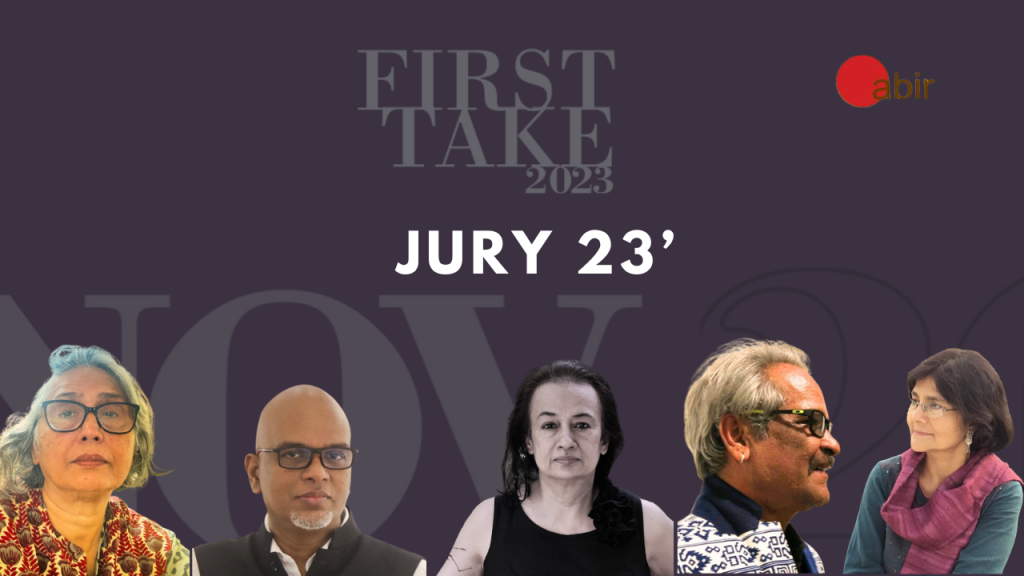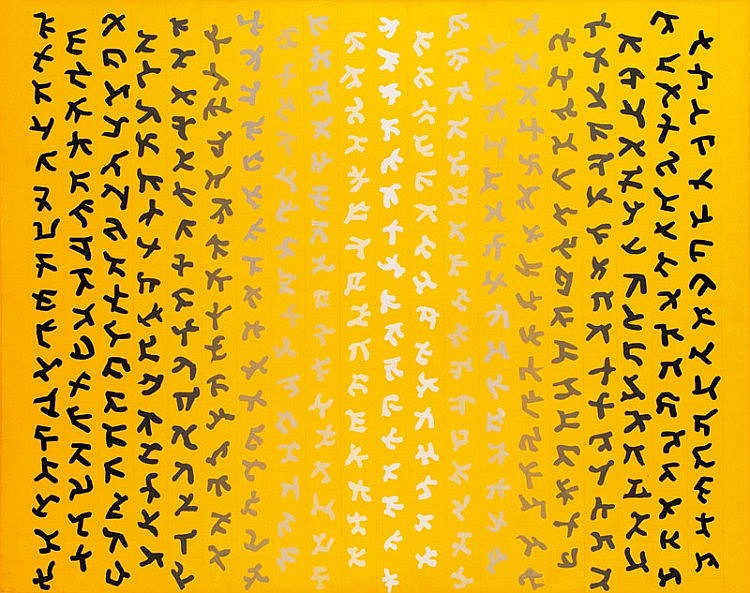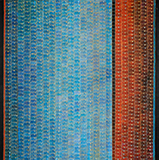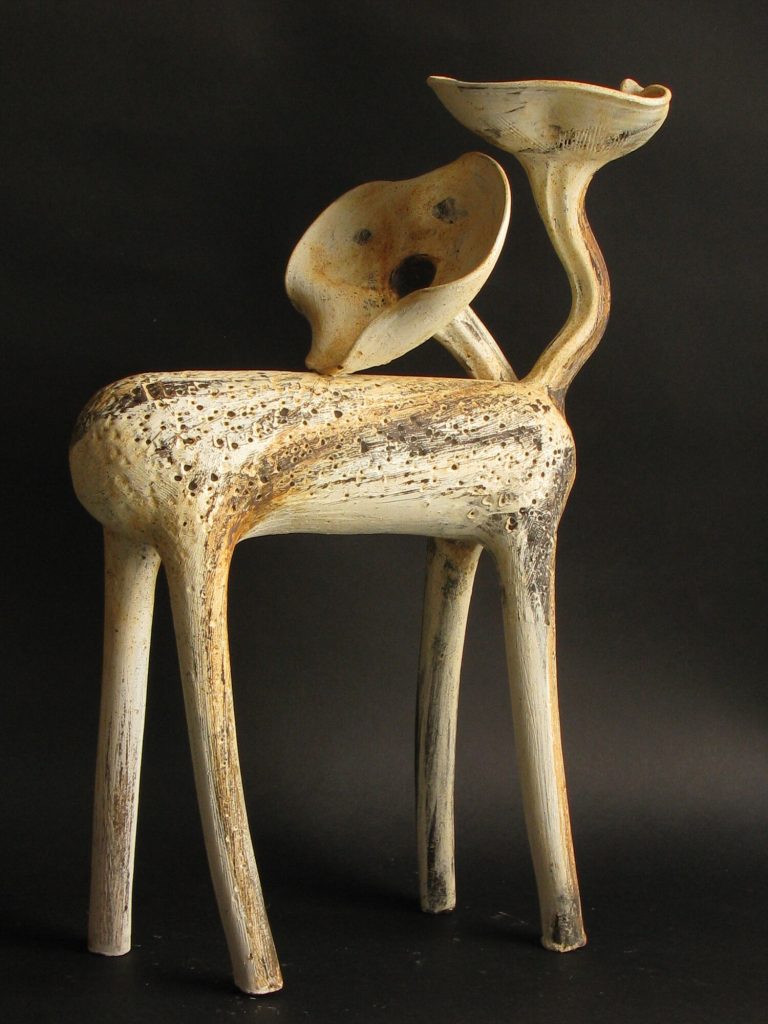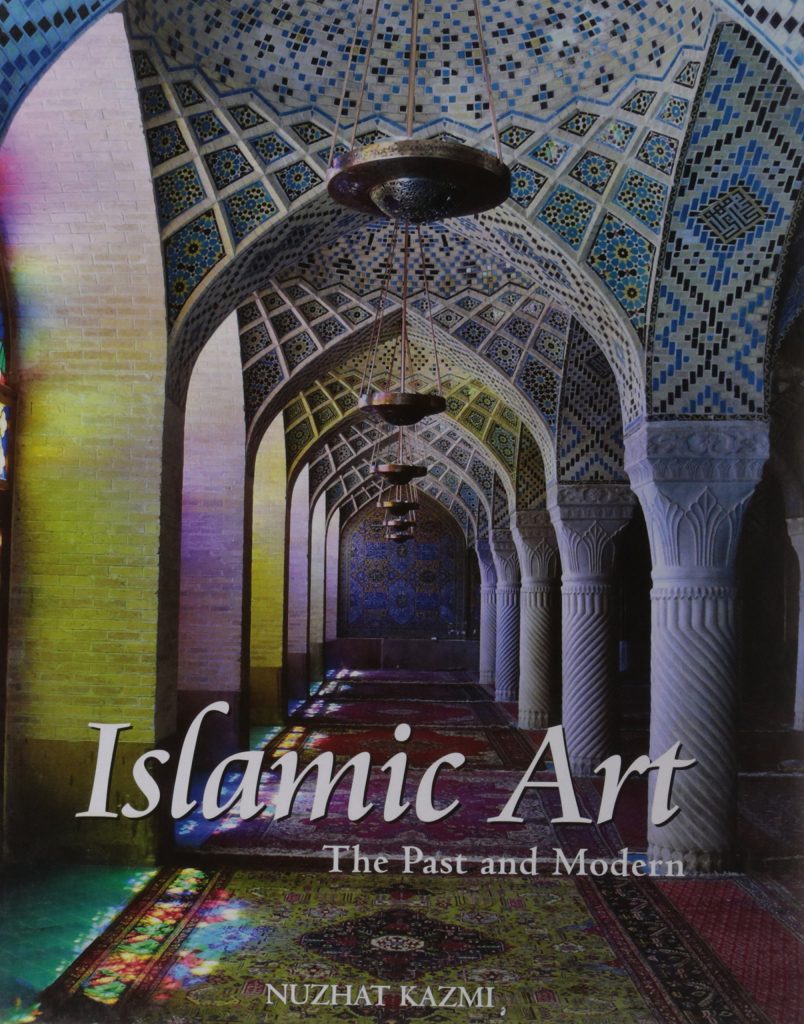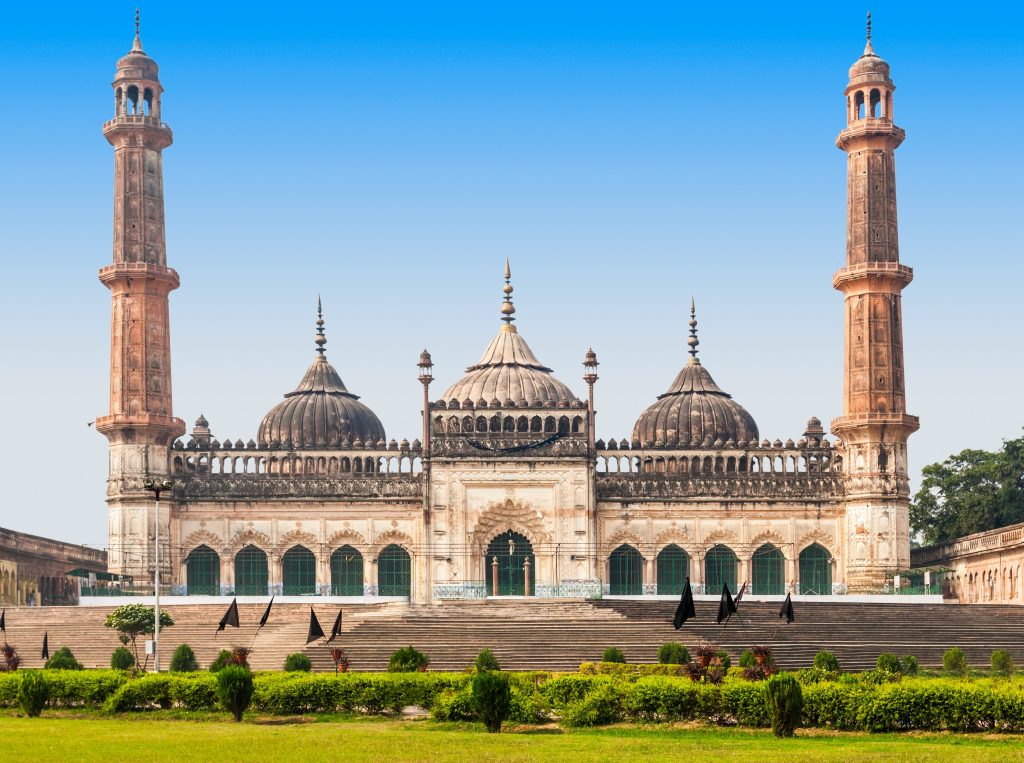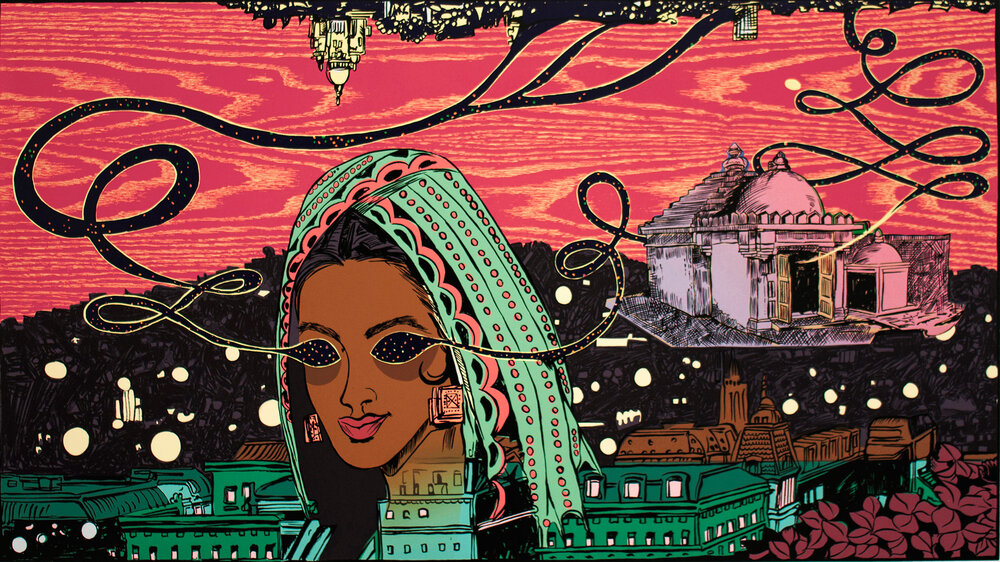The seventh iteration of Abir India’s First Take 2023 is about to engulf the vivacious city of Ahmedabad. This event is more than just a show; it is a demonstration of the ability of art to transcend boundaries and captivate hearts. It’s important to consider Abir India’s extraordinary journey to this point as the expectation grows. Out of scores of entries, about 100 works would be picked by the eminent jury from India. The jury will select the best out of the lot and ten awards in total are awarded.
Akhilesh
Born in Indore, Akhilesh was taught painting by his father. In the beginning, Akhilesh actively fought any attempts to pursue a career as an artist, but by his senior year of high school, his resolve grew brittle. Later, he completed his studies to receive a diploma in fine arts. He is a member of a group of painters from India’s rural areas, who are steeped in customs yet displaying a novel perspective. Although he is aware of the trends in the art world, he has been influenced by the tribal and folk traditions of Madhya Pradesh. Later, Akhilesh changed his headquarters to Bhopal and began designing textiles.
Works and Art
The works of art by Akhilesh seem to be a collection of beginnings. There are no ends, though. His art has the impression of being left unfinished yet does not appear to be. It is impossible to view it as having a beginning and an end. Although the way he employs lines may give his work a certain linearity, these lines seem to disappear into the canvas, refusing to give his work the usual linear features. His works look to be vibrant and new, and the hues evoke strong feelings. He stays away from an uncharted area. Instead, he stays on well-trodden territory. His technique for transferring well-known terrain onto canvases gives his artwork a distinctive quality. His artwork doesn’t scream for attention and doesn’t have anything to offer the casual, rushed spectator. However, they may be a rewarding experience for the patient spectator.
Courtesy: Invaluable
Exhibitions
Through his significant participation in several exhibits, presentations, camps, and other events, he has attracted fame and admiration for his artwork on a global scale. Among his thirty-seven solo and thirty-four collective exhibitions, the recent ones include: “Symbols & Merveillies les Coulers de Inde” (Nice, 2009); “Enigmatic Scripture” (Munich, 2010); “Butterfly” curated by Prayag Shukla (Mumbai 2010); “Remnantes of Void” by Manish Pushkale (Australia 2010); “Rang-Leela” (Indore, 2011); at Red Earth Art Gallery (Baroda, 2011); at the Institute of Advanced Studies, Nantes (France, 2011); and Chennai Art Summit (Chennai, 2011).
Mr. Akhilesh has also taken part in 123 national and international exhibitions, the first of which was the “Inter- State- Art Exchange” (Lucknow, 1976) and the most recent one was “Contemporaries” (New Delhi 2011); and has been actively involved in a number of art camps, including the Arts India Artist Camp (New York, 2005 & 2006), Kenya Artist’ Camp (South Africa, 2007), Art Summit Camp (Kolkata, 2008), Bhoruka Foundation Camp Many notable curators, including Manjit Bawa, Prayag Shukla, Rm. Palanippan, Renu Modi, Gayatri Sinha, Kalpana Shah, and Manish Pushkale, have staged exhibitions including his works.
Courtesy: Saffron art
In addition to the aforementioned, he has also organised a number of exhibitions, including one for the collection of the Bharat Bhavan in Bhopal and others for the Tao Art Gallery in Mumbai, the Art Indus Gallery in New Delhi, the Aakar Prakar Gallery in Kolkata, the Art Today Gallery in New Delhi, and the Icon Gallery in the United States.
He founded “The Black Group,” founded the “Museum of Police Bands” at PHQ in Bhopal, the “Art of Malwa” Museum at Lal Bagh Palace in Indore, gave a lecture at Towson University in the United States, translated Marc Chagal’s autobiography into Hindi, is currently working on the biography of artist MF Husain, and edited a special issue of SH Raza’s Kala Varta.
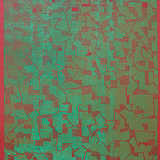
Courtesy: Saffron art
His works are included in numerous collections, both privately owned and those belonging to reputable institutions, including those at Jawaharlal University in New Delhi, the National Gallery of Modern Art in that city, the Queen of Iran in that country, the Asians’ Art Centre in the United States, the Swiss Embassy in London, the Victoria and Albert Museum in London, Vidhan Sabha Bhawan in Bhopal, the Peabody Museum in Boston, the Mr.& Mrs. Chester Herwitz Collection in the United States, an exhibition at The Kalidas Academy Certificate Award (1976), the Bharat Bhawan Biennial (1990), the Government of India Senior Artist Fellowship (1994-1995), and the Kala Kaustubh Samman (2006) are only a few of the honours and accolades that Mr. Akhilesh has received in the world of the arts. He is a resident and employee of Bhopal, Madhya Pradesh.
Vasudha Thozhur
Vasudha Thozhur is an interdisciplinary artist, mainly focused on Painting in watercolour and oil, and she was a professor at the Department of Art and Performing Art at Shiv Nadar University, Noida.
Vasudha was Born in Mysore and studied Painting at the College of Arts and Crafts, Chennai and the School of Art and Design in Croydon, UK. Between 1981-97, Vasudha lived and worked in Madras; 1997-2013, she lived and worked in Vadodara. In 2013 Vasudha Thozhur started to associate with Siva Nadar University. She has also cooperated with Himmat, an activist community established in Vatva, Ahmedabad, which functions with the survivors of the Gujarat Riots.
Vasudha received a research grant from Central Lalit Kala Academy in 1988; in 1989, she received the Ministry of Culture Fellowship for Artists. She won French Government Scholarship and The Charles Wallace Grant in 1996.
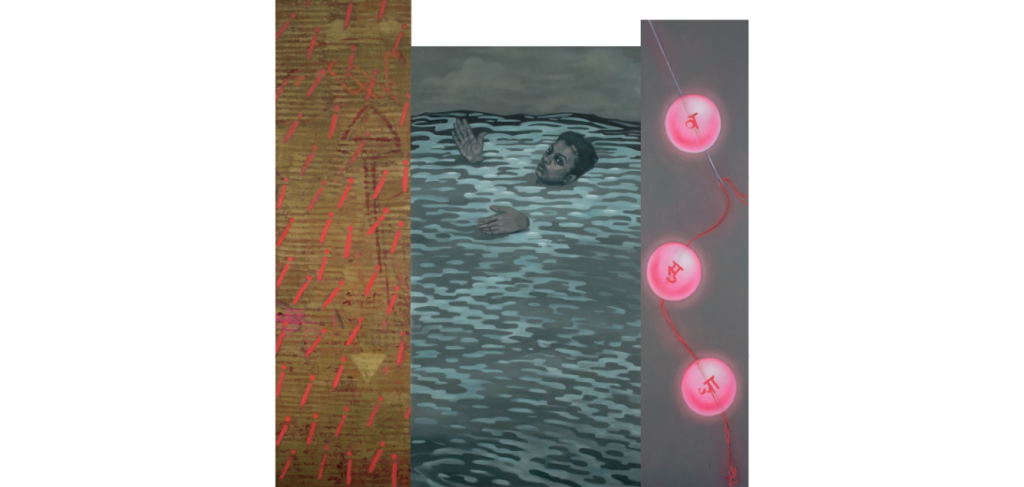
Documenting Massacre
Vasudha’s collaboration with ‘the Himmat brings new insights into Gujarat Riot; they closely work with riot survivors and victims, especially in Naroda Patiya, a project titled ‘Beyond Pain – An Afterlife encapsulates the painful memory of a riot. In this project, Vasudha Thozhur inquires about collective trauma and the massacre’s effects on the survivors’ lives.
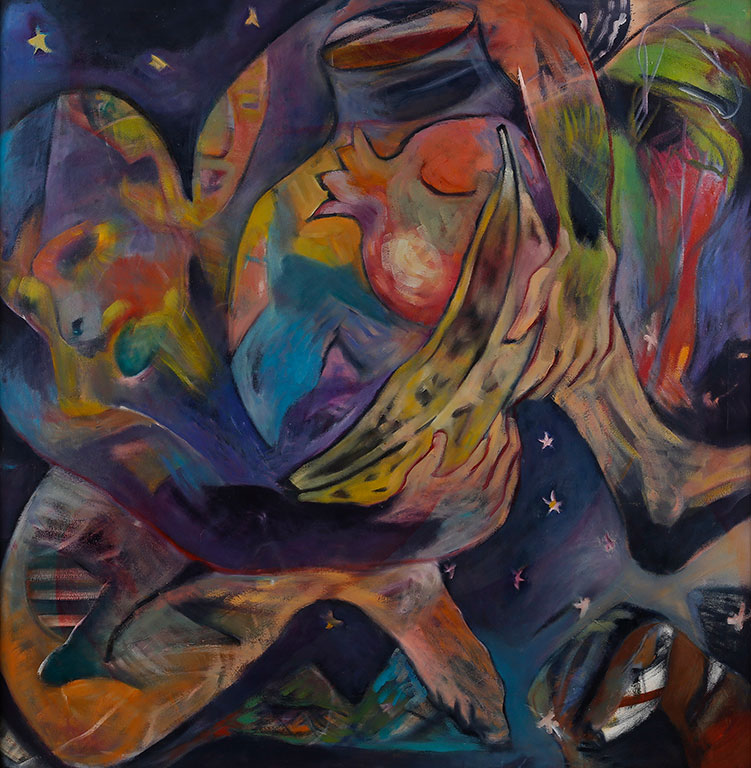
Vasudha gathered her drawings and paintings depicting daily life in a conflicted contemporary society named ‘Secret Life’ that contained paintings and drawings from 1997 to 2001. She builds a narrative through compositions depicting rooms in a household, each following the idea of home and image and how they are created together and merged.
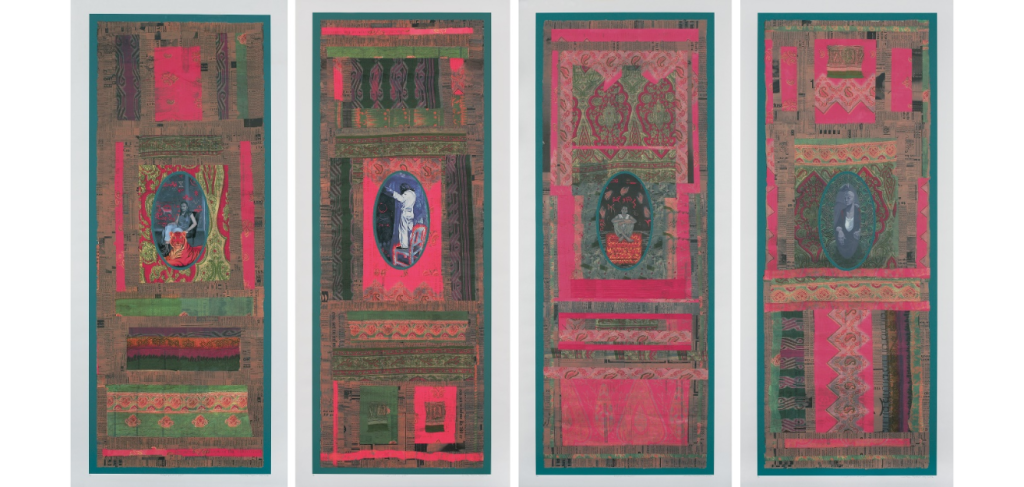
Shampa Shah
Shampa Shah,Transformation Series. Stoneware | quartzinversion
Shampa Shah is a renowned ceramic artist who has won the first-ever Jyotsna Bhatt Ceramics Award 2021. Her art practice, mainly in clay, brings back the dialogue between the traditional and the modern in style and form and overlaps her approach to writing and curating. Her decades-long journey through mediums brings the mastery of the language of firing and kilns, glazes, and shapes reflected as natural appeal.
Indigenous Practice
Shampa Shah’s language of clay is rooted in Indian indigenous traditions of India which amalgamate the nature of mundane life and Art practice. The influence of indigenous practices reflected in Shampa’s artworks, and the continual improv, experiment and elegance in ceramic art is an exploration of another world. She blends modern design, techniques, and materials elements with ancient traditions and maintains unique idioms which echo modernist moorings.
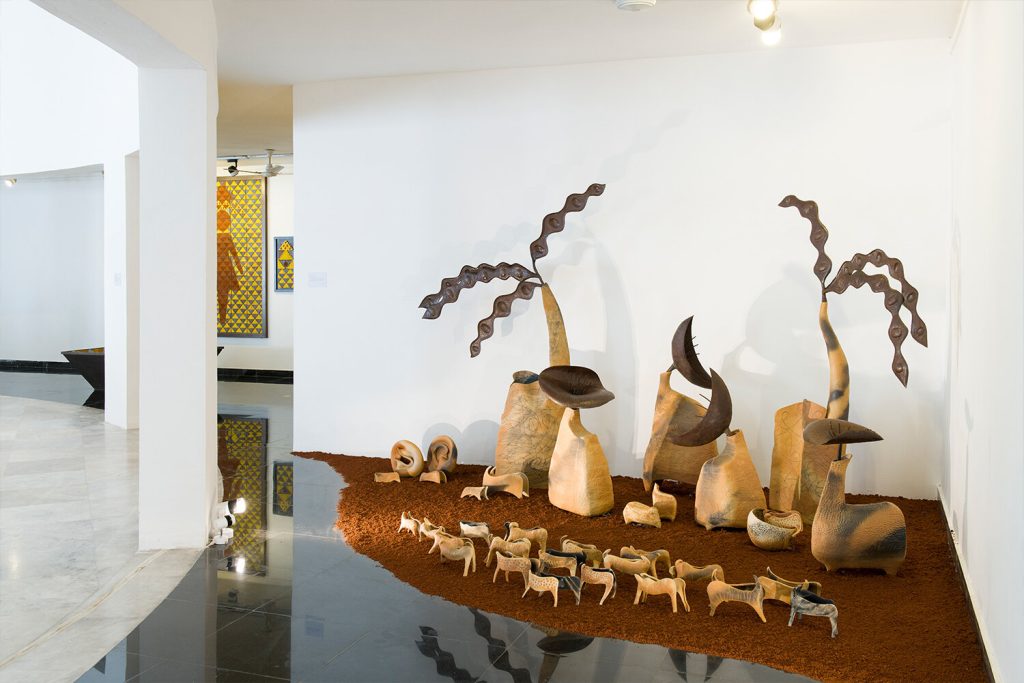
Shampa Shah | indianceramicstriennale
“The way I can’t predict my dreams, I can’t possibly figure out the impact of this Covid experience on my ceramic forms. Though I find myself contemplating more organic ways of living these days, I think of shifting to terracotta because of its local availability, less fuel consumption etc. It will also give me more opportunities to work with the indigenous potters of my locality. If this shift occurs, my work will change on many levels”
-Shampa Shah
Work and Life
Shampa Shah is a five-time recipient of the All India Fine Arts and Crafts Society (AIFACS) Awards and was awarded the Junior National Fellowship of the Ministry of Human Resource and Development and the Roopankar Fellowship of Bharat Bhavan, Bhopal. When she was head of the Ceramic Section at Indira Gandhi National Museum of Man (IGRMS) Bhopal for 21 years, she did guidelines for exhaustive research and documentation on the pottery traditions of India and a host of traditional folk and tribal artists of India.
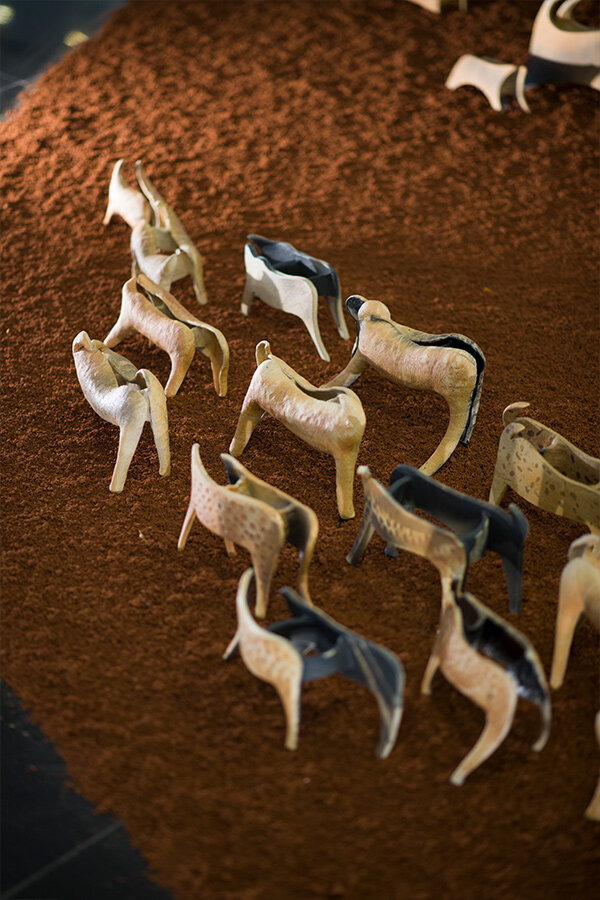
Stoneware and iron Variable size. indianceramicstriennale
As a curator, mentored major exhibitions for IGRMS on the theme of folk and tribal `Mythologies of India’. She was an advisor museologist and folklorist to conceptualise the newly formed Madhya Pradesh Tribal Museum, Bhopal. She has published widely on India’s contemporary art and storytelling practices, including Tribal Crafts of M.P. from Mapin. Her best-known works are a fusion of plant and animal physiques from a series called Transformation.
Murali Cheeroth
Murali Cheeroth is an Artist who is part of Abir India’s First Intake 2023 and offers his expertise to this grant selection process.
‘We must understand the transitions that happen in art. It’s unfair if we don’t identify this when the world is transforming entirely, Artists Murali Cheeroth said when he was taken charge of Kerala Lalit Kala Academy. Murali Cheeroth is a Malayali artist, educator and activist, bearing a Chairman position in Kerala Lalit Kala Academy. He has completed his BFA from Thrisur Fine Arts College and his MFA in Print-Making. He has participated in several solo and group exhibits in India and abroad for the last four decades.
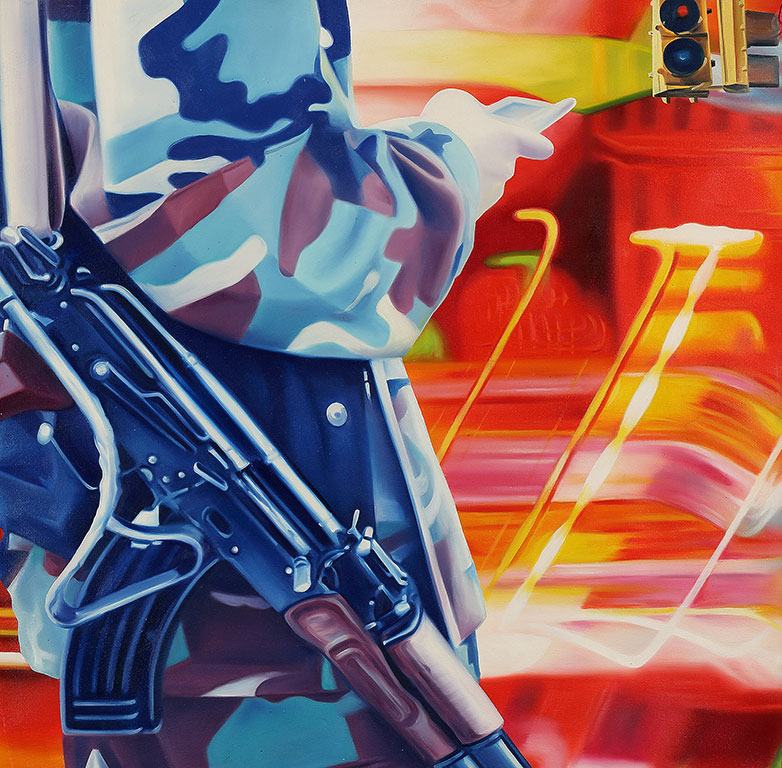
UNTITLED, 2007 by Murali Cheeroth | saffronart.com
Murali Cheeroth got Kanoria Scholarship for Print Making in 1997 and the Kerala State Lalit Kala Academy award, Junior Fellowship, research in fibre art in 1997-99.
Exhibitions
Murali Cheerot is an affluent artist who created artwork in different mediums and domains and was frequently exhibited worldwide; major ones include the two men show at Kashi Art Gallery 2007, Redding Paint, a group show at Soul Flower Gallery Bangkok 2007, Waging Peace, at Arts for Peace Gallery, New York, in Jan. 2008, Rock+music+art Group show organized by Gallery Art Resource, Mumbai.
In 2005, a show titled ‘The Second Coming -The Quotable Stencil -Part Two’, Tao Art Gallery. In 2006, Murali Cheerot attended more than five solo and group shows, including a Group show organized by the gallery Open eyed Dreams, Mumbai, ‘Paper flute’ works on paper at Gallery Espace. Curated by Johny M.L, ‘Waging peace’ international Exhibition curated by Troy West and Claudia Flynn, Rhode Island USA, Three man show with George Martin, Vinay K D at ViART Art gallery, New Delhi, Gandhi Satyagraha centenary exhibition, Travancore art gallery New Delhi and Kizo gallery Durban South Africa ‘Recurrence’ exhibition of paintings, New Delhi.
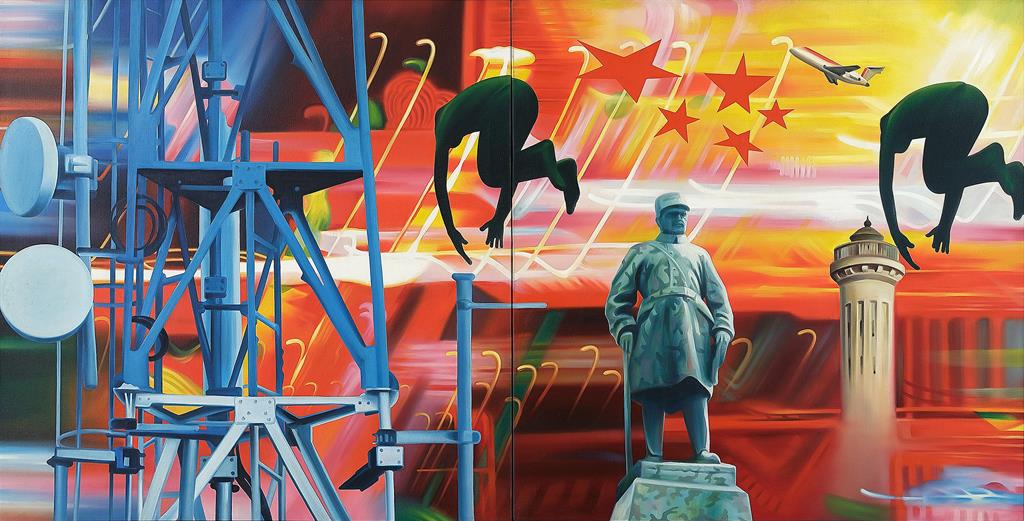 MESH REMAPPING 1, 2008 by Murali Cheeroth | saffronart.com
MESH REMAPPING 1, 2008 by Murali Cheeroth | saffronart.com
In 2009, Murali Cheerot showcased his works worldwide, including a Solo Show: Unmarked, Viart Gallery, New Delhi. Signs 2009, curated Video Festival, Thiruvananthapuram. Connective Delineation, FSCA, Mumbai, Passage to India, Part Two New Indian Art from the Frank Cohen Collection, Wolverhampton, U K, Metamorphosis, PAC Gallery, Cincinnati. Video Wednesdays, curated by JohnyML, Gallery Espace, New Delhi, Art Chicago Presented by PAC gallery Cincinnati. Meet the Artist at Chicago Art Fair, USA, The Art of India – 20 Years of Contemporary Indian Art, Munich. Germany, Ways of Seeing, Galley Soulflower, Bangkok, Thailand.
Spectrum is a show curated by Sarayu Doshi, Abu Dhabi. His works are housed in many important private collections in Japan, France, Canada, Holland and India.
Work and Life
According to the artist, his working approach is “a kind of extraction system that draws on tiny concerns about uber urbanization, frenzied globalization and the visual/virtual stimulation therein, and folds and unfolds them into another reality to simplify their characteristics and relationships to build a new visual experience that is clear and vivid”. Before he settled in Bangalore, Cheeroth lived in multiple cities and used his understanding as an “outsider” to declare his art.
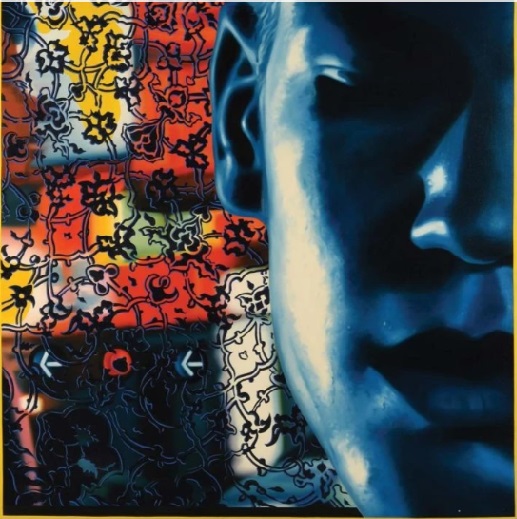
Scene 1, 2007 by by Murali Cheeroth | saffronart.com
Murali Cheerot’s works display the visual commentary element of social settings and mention cultural facilities and identities in society. Murali often uses society as a range of mastery to unlearn the system’s prejudice; for this, he vividly uses the new media and advertisement. Through deformed, distorted, and multi-layered to create overlapping perspectives, Murali Cheerot transforms the subject into
His work is vivid commentaries and observations of cultural structures and identities in society. Often stitching together a collage of jarring imagery, Cheeroth renders his work with neon saturations that bear resemblance more to new media and advertisement than fine art. While somewhat recognizable, the subjects in Cheeroth’s paintings are deformed, distorted, and multi-layered to create overlapping perspectives.
Dr. Nuzhat Kazmi
Dr. Nuzhat Kazmi is a retired faculty and founder head of the Department of Art History and Art Appreciation, and Faculty of Fine Arts at Jamia Milia Islamia University, New Delhi. Being a professor, author and an astounding researcher, her works are widely cited in the fields of Art History and Criticism. More specifically her areas of expertise include Islamic art, Mughal art, and Medieval and Modern Indian Art post-European influence. Kazmi is a Commonwealth Scholar from the School of Oriental and African Studies, University of London. She is the Foreign Editor of SAAC Online Journal, a member of the Royal Asiatic Society, London and has been invited for lectures to NGMA (National Gallery of Modern Arts), Nehru Centre, London University and much more.
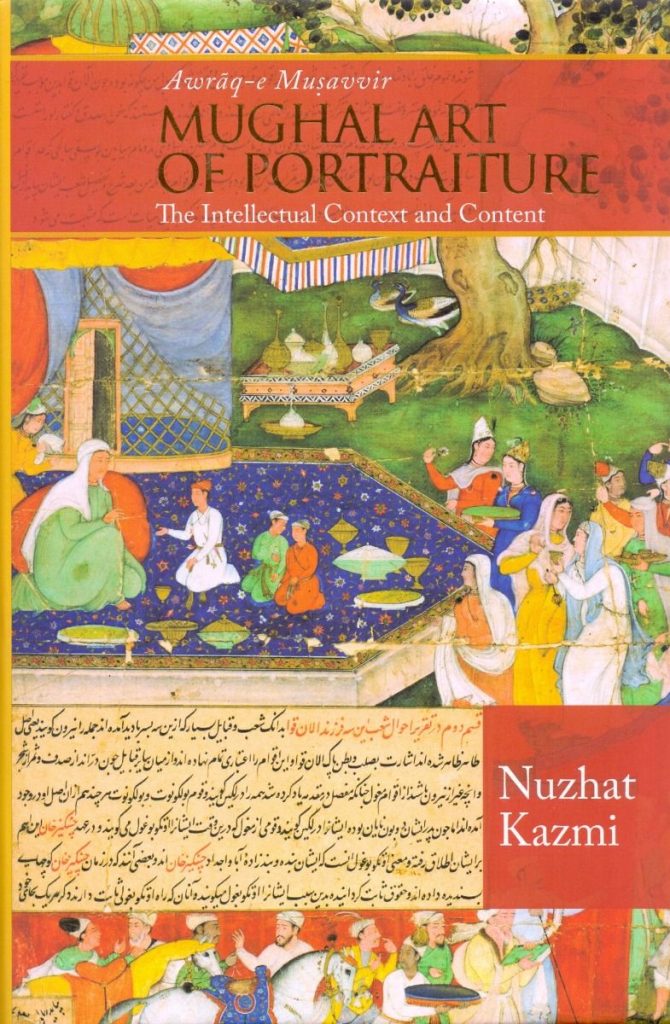
Courtesy: Left Word Publishing.
Owing to her immense knowledge of the field, Kazmi has been attributed to various books and research papers on art history. One of her notable works is“Awraq-e Musavvir, Mughal Art of Portraiture”. This book explores Mughal Portraits paintings as a whole. It delves into the aspect through not just historical but also sociological, political and cultural lens. It discusses how rulers of the Mughal era were not just patrons of art but also connoisseurs. Moreover, Kazmi has also explored the portraiture narratives in terms of gender and sovereignty. Leftword publishing house describes the book as “[an] enjoyable reading for art historians, students and for the layperson interested in art or in a sensible view of the Mughal era”.
One of her other widely-known works is her book titled,“Islamic Art: The Past and the Modern” (2009). The Book talks about how Islamic art developed along with all other forms of art. It has borrowed from other cultural traditions since its earliest incarnations and continues to do so today. The book examines the artistic creations produced by the Islamic civilization over the centuries, from its inception to modern interpretations. Kazmi has combined the sensitivity and seriousness that this particular kind of art demands with both the inclusive and exclusive traits of this great tradition from around the world.
Furthermore, In February 2014, Nuzhat Kazmi was invited by IGNCA (Indira Gandhi National Centre for the Arts), wherein she presented a lecture on Indian Modern Contemporary Art in the Context of South Asian art.
Dr. Nuzhat Kazmi’s participation as a jury member for the Seventh Edition of Abir India’s First Take 2023 holds immense significance, underscoring the event’s commitment to fostering and recognizing excellence in contemporary Indian art. Her distinguished background as a professor, author, researcher, and expert in the field of Art History and Criticism adds a layer of credibility and expertise to the judging process. Along with her extensive work in the areas of Islamic art, Mughal art, Medieval and Modern Indian Art, brings a wealth of knowledge to the judging panel. Her expertise is poised to lend a discerning eye to the selection of artworks, ensuring that the chosen pieces exemplify the highest standards of artistic achievement within the contemporary Indian art scene.
Why are they important and What do they offer?
In the seventh iteration of First Take, the jury panel plays a significant role by offering perceptive analysis, context, and interpretation of the artworks displayed by gifted young artists from all over India. They aid viewers in comprehending the intricacies, historical relevance, and artistic goals of works of art. This discussion encourages appreciation, sparks debate, and advances both artistic expression and comprehension. Positive criticism of the jury promotes discussion, supports artist development, and aids in the advancement of artistic trends. By recording the cultural and social context in which artworks are produced, they also in some way aid in the representation of contemporary Art.
Read Also:
Unfolding Dreams Since 2016: Tracing the Journey of Abir India’s First Take

